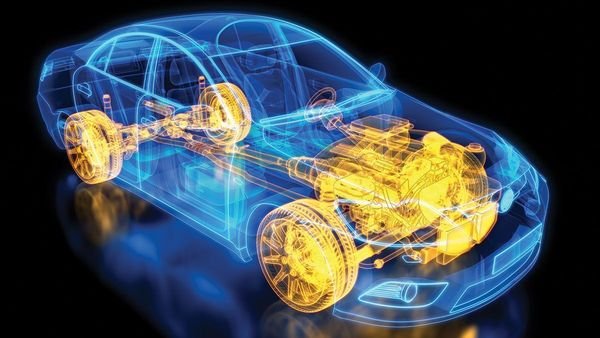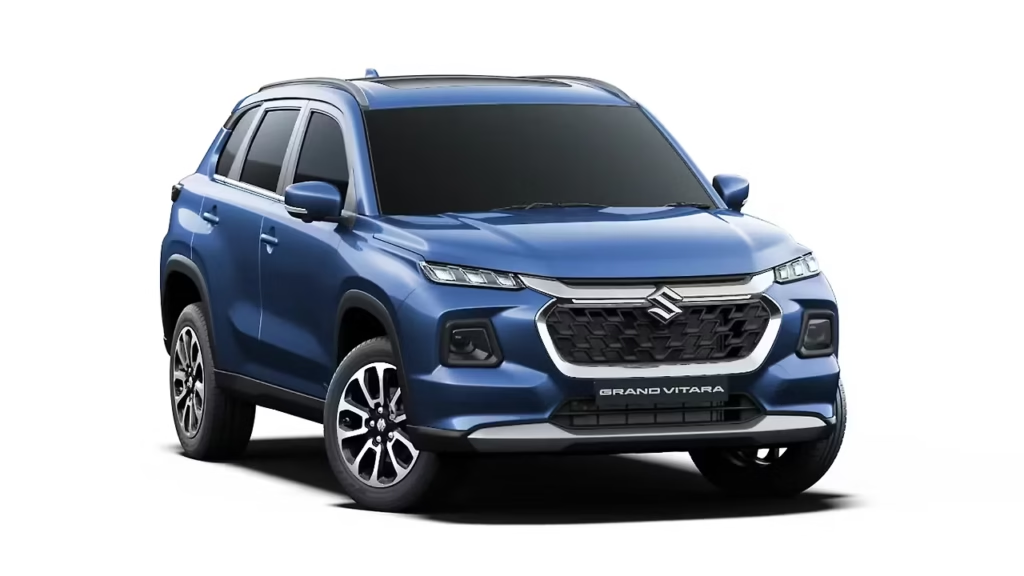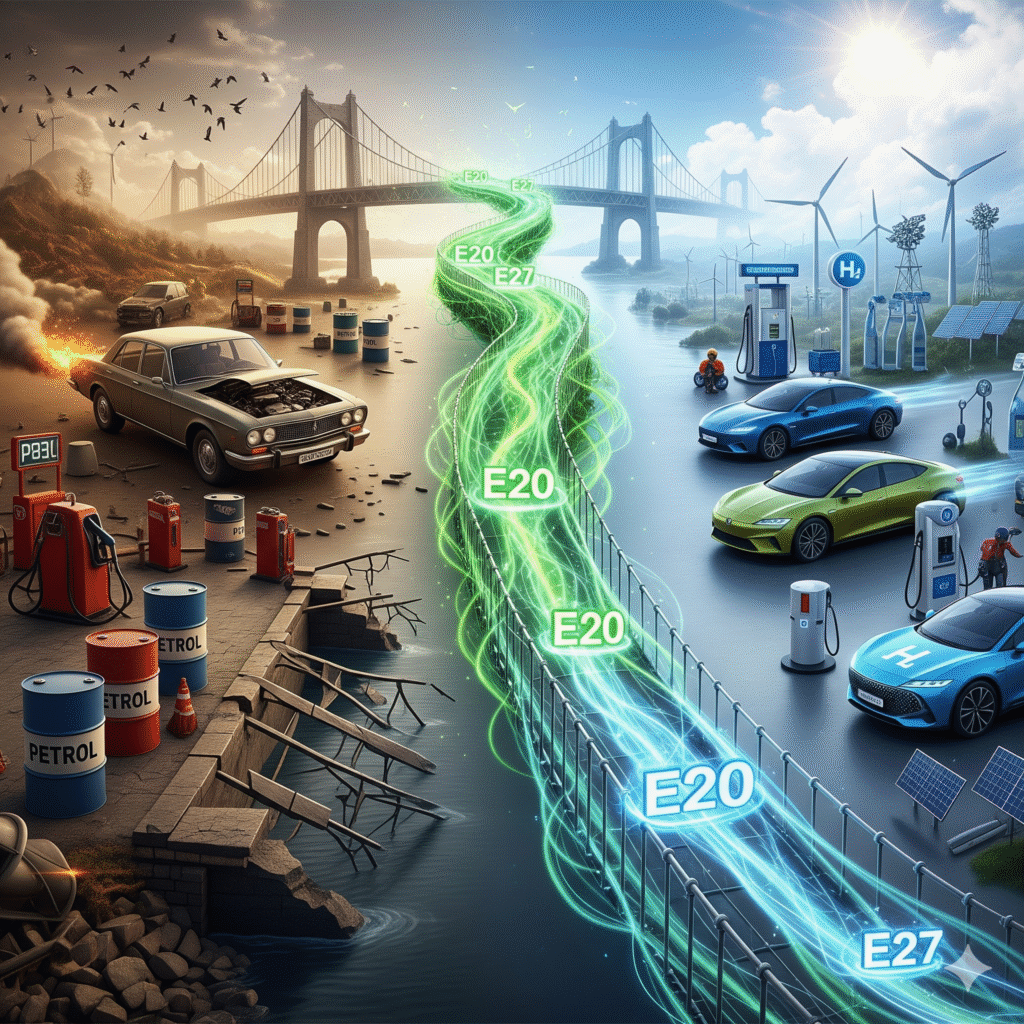Suzuki, a stalwart in affordable mobility, is accelerating its journey toward carbon neutrality with a bold, multi-pronged roadmap unveiled on September 10, 2025. This decade-long strategy focuses on innovative powertrains that balance environmental responsibility with cost-sensitivity, a critical factor for markets like India, where affordability drives demand. The company is developing a 1.5L turbo petrol engine with direct injection (DI), second-generation plug-in hybrid (PHEV) systems, and flex-fuel vehicles capable of running on 85% ethanol blends, alongside next-generation electric vehicles (EVs). These advancements aim to bridge the gap between sustainability and accessibility, positioning Suzuki—and its Indian arm, Maruti Suzuki—as a leader in green automotive technology.
A Multi-Pronged Approach to Sustainability
Suzuki’s roadmap, detailed in a recent RushLane report, outlines a comprehensive plan to achieve carbon neutrality by 2035 while catering to diverse global markets. Unlike competitors betting heavily on full electrification, Suzuki is adopting a pragmatic mix of technologies to address varying infrastructure, fuel availability, and consumer preferences. The key pillars include:
- 1.5L Turbo Petrol Engine with Direct Injection: Suzuki is enhancing its existing 1.5L naturally aspirated (NA) and turbo petrol engines for improved fuel efficiency starting in 2025. By 2030, a new 1.5L DI turbo petrol engine will debut, promising significantly higher performance than the current 102 bhp NA setup. Rivals’ DI turbo engines deliver up to 160 PS, and Suzuki aims to compete in this space with better power-to-weight ratios and efficiency. This engine will likely power models like the next-gen Vitara, Fronx, and potentially a sportier Jimny variant, offering a balance of performance and emissions reduction.
- 85% Ethanol Flex-Fuel Vehicles: Starting as early as 2025, Suzuki will roll out flex-fuel vehicles in India, designed to run on blends up to 85% ethanol (E85). This move aligns with India’s ethanol-blending targets, aiming for 20% by 2025 and higher blends thereafter. Ethanol, derived from sugarcane and other biomass, is a renewable fuel that reduces reliance on fossil fuels. Maruti Suzuki’s expertise in CNG vehicles (e.g., Brezza, WagonR) positions it well to adapt flex-fuel tech, potentially for models like the Ertiga or Grand Vitara. This could lower running costs and emissions, appealing to rural and semi-urban buyers.
- Second-Generation Plug-In Hybrids (PHEVs): While Maruti Suzuki already offers mild-hybrid systems (e.g., Brezza ZXi with 48V tech, boosting efficiency by 2.51 km/l), the company is now developing Gen-2 PHEVs for launch by 2030. Unlike the Toyota-sourced series-parallel hybrids in the Grand Vitara and Invicto, Suzuki’s PHEVs will use a simpler series hybrid setup. Here, the petrol engine acts solely as a generator to charge the battery, which powers the electric motor driving the wheels. This reduces complexity and production costs, making it ideal for sub-4-meter cars like the Fronx or a future WagonR hybrid.
- Gen-2 EVs with Extended Range: Building on the e-Vitara’s success—a 4-star Euro NCAP-rated electric SUV launched in 2025 with up to 550km range—Suzuki is working on second-generation EVs with even longer ranges. These will leverage advanced battery tech and cost-effective platforms, likely the AmpR Small, to compete with rivals like Hyundai’s Ioniq series and Tata’s Curvv EV. In India, the e-Vitara’s Gujarat production and 85% localization keep costs competitive, a strategy Gen-2 EVs will likely follow.
Why This Matters for India
India, Maruti Suzuki’s largest market with over 50% market share, is at the heart of this roadmap. The country’s push for cleaner fuels—evidenced by FAME-III subsidies and a 20% ethanol-blending mandate by 2025—creates fertile ground for Suzuki’s innovations. Here’s how each powertrain could impact the Indian market:
- 1.5L DI Turbo Petrol: Indian buyers crave performance without sacrificing fuel economy, especially in compact SUVs like the Fronx and Brezza. The new 1.5L turbo engine could deliver 140-160 PS, rivaling Hyundai’s 1.0L T-GDi (120 PS) and Mahindra’s mStallion 1.5L (150 PS). Expect it in premium trims of the Grand Vitara 7-seater (codenamed Y17, launching Diwali 2025) or a facelifted Fronx, priced around ₹12-15 lakh.
- E85 Flex-Fuel: Ethanol blends are cost-effective and widely available in India, with over 10,000 pumps offering E20 by mid-2025. A flex-fuel Ertiga or Kiger could start at ₹10 lakh, undercutting CNG models while leveraging government incentives. This aligns with Suzuki’s cost-sensitivity focus, appealing to fleet operators and rural buyers.
- Gen-2 PHEVs: Maruti’s series hybrid system could debut in the 2025 Fronx facelift with a 1.2L Z12E 3-cylinder engine, offering 30-40km electric-only range and 25-30 km/l efficiency. Priced at ₹10-13 lakh, it would compete with Toyota’s HyRyder strong hybrid but at a lower cost, targeting urban commuters. The simpler design ensures affordability, crucial for India’s sub-4-meter segment.
- Gen-2 EVs: The e-Vitara’s success (starting at ₹20-25 lakh in India) sets the stage for more affordable EVs by 2030, potentially a sub-₹15 lakh hatch like the WagonR EV. With 400-600km range and fast-charging, these could challenge Tata’s Tiago EV and MG Comet EV, especially if localized battery production (e.g., via Tata AutoComp) keeps costs down.
Challenges and Opportunities
Suzuki’s multi-pronged approach is pragmatic but not without hurdles:
- Infrastructure Gaps: India’s charging network (100,000 stations targeted by 2025) and ethanol supply chains are still developing. Flex-fuel vehicles need consistent E85 availability, while PHEVs and EVs require robust fast-charging.
- Competition: Tata (40% EV share), Hyundai, and Mahindra are ahead in electrification and turbo petrol tech. Mahindra’s mStallion 1.5L TGDi, for instance, powers the XUV700 with 200 PS, setting a high bar. Suzuki must ensure its 1.5L DI turbo matches this performance.
- Cost Pressures: High localization (85-90% for e-Vitara) is critical to keep prices competitive. Import duties on batteries or components could inflate PHEV and EV costs, though FAME-III subsidies may offset this.
Yet, opportunities abound. Suzuki’s alliance with Toyota provides access to hybrid expertise, as seen in the Grand Vitara’s THS system. The Gujarat plant’s export success—2,900 e-Vitara units shipped to E3urope in August 2025—proves Maruti’s global scalability. Social buzz on X highlights enthusiasm for Suzuki’s green push, with users praising the e-Vitara’s 4-star Euro NCAP rating and awaiting hybrid rollouts.
Global and Indian Impact
Globally, Suzuki’s roadmap positions it as a versatile player, offering alternatives to EV-only brands like Tesla. The 1.5L turbo petrol will appeal to Europe’s performance hatch market (e.g., Swift Sport), while E85 vehicles target Latin America and India. PHEVs and Gen-2 EVs will strengthen Suzuki’s foothold in Japan and Europe, where emissions norms are stringent.In India, Maruti Suzuki’s 1.5 million annual sales and 2,500+ service touchpoints give it unmatched reach. The flex-fuel and PHEV options could capture 10-15% of the non-EV market by 2030, while Gen-2 EVs bolster Maruti’s 30% EV share goal. Models like the 7-seater Grand Vitara and Fronx facelift will likely be early adopters of these powertrains, enhancing their appeal.
Conclusion: A Balanced Path to Carbon Neutrality
Suzuki’s roadmap—encompassing a 1.5L DI turbo petrol, E85 flex-fuel, Gen-2 PHEVs, and advanced EVs—reflects a strategic blend of innovation and pragmatism. By 2035, these powertrains could reduce emissions by 20-30% across its lineup while keeping costs low, a win for markets like India. Maruti Suzuki’s focus on localization and its Toyota partnership ensure scalability, though infrastructure and competition remain challenges. As the e-Vitara leads the charge, Suzuki’s green revolution promises to redefine affordable mobility, one powertrain at a time.



